American Sign Language Teaching Resources
Download and print teacher-created American Sign Language resources for the classroom, designed to help you teach in sign language this school year! Teach the ASL alphabet, work on fingerspelling, teach students how to sign their numbers, and more with these resources.
Maybe you have Deaf or hard-of-hearing students in your classroom this year, or maybe not. Did you know there are benefits to teaching ASL for all kids? Read on for a look at the benefits kids get from learning American Sign Language at school, plus an explanation of ASL you can use with your students.
What Is American Sign Language? A Definition for Kids
If you're introducing American Sign Language in the classroom to students who are not Deaf or hard of hearing, it may be their very first time learning about this special language. So, how do you explain what you mean?
Here's a simple explanation from our teacher team!
American Sign Language is a language that is used to communicate through hand and arm movements, facial expressions and body language. The language is mostly used by members of the Deaf and hard-of-hearing communities in the United States and Canada, although anyone can learn to use sign language to communicate.
Each word, letter and number in American Sign Language is represented by its own hand movement, which is known as a hand sign or simply a sign.
Sometimes abbreviated as ASL, American Sign Language has its own special alphabet and dictionary — just like American English!
When Was American Sign Language Invented?
Historians are not sure exactly when American Sign Language was invented as there have been different ways of communicating with hand gestures throughout American history.
As far back as the 14th century, for example, Native Americans living in the Great Plains, for example, were known to use a sign-based language to communicate with members of other tribes to bridge the gaps created by their different spoken languages. Meanwhile, people living in the thriving Deaf community on Martha's Vineyard in the 18th century were known to use a language called Martha's Vineyard Sign Language or MVSL.
The American Sign Language we know today, however, is often credited to two men named Thomas Hopkins Gallaudet and Laurent Clerc. Creators of North America's first school for Deaf children in the 1800s, the two men are also believed to have formalized a number of different signs used in America and in France to create the ASL used today.
What Are the Benefits of Teaching Sign Language to Kids?
The benefits of learning sign language for Deaf and hard-of-hearing children are fairly obvious. So why are more and more schools adding ASL instruction for students who are not Deaf as well?
Let's look at the benefits!
- Using American Sign Language creates a more inclusive classroom. — When students in your classroom know some ASL — even if it's simply being able to sign hello or fingerspell their own names — it makes it easier for a Deaf or hard-of-hearing student to transition into your class. They automatically will feel more welcome and more at home in a space where classmates are trying to communicate with them.
- Learning American Sign Language improves reading scores. Teaching American Sign Language in pre-K and kindergarten has been going on long enough now for researchers to have followed students as they have aged to see whether or not there was a benefit to their academic success. The good news? There absolutely is. One study out of Penn State, for example, found kids who are taught ASL early in their education benefit from a vocabulary boost of as much as 15 to 20 percent.
- Learning ASL helps hearing students develop empathy. — Teaching your students ASL can help break down misconceptions about living with Deafness, and it also helps your non-Deaf students take a walk in their shoes. This can open their eyes and help them better understand what it's like to live with a disability.
- Early ASL exposure has been linked to IQ boosts. Correlation does not always equal causation, but at least one study from California State University has linked early ASL exposure in kids to an IQ boost of at least 12 points.
- Free Plan
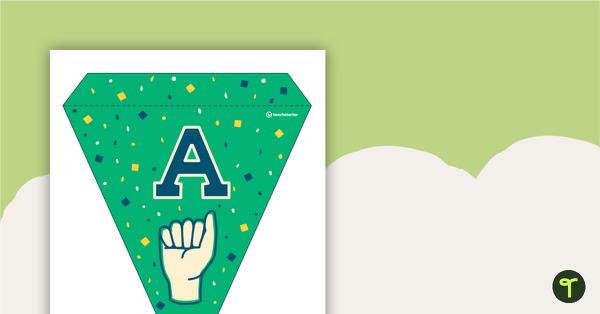
American Sign Language - Pennant Banners
American sign language pennant banners that include letters, numbers, and punctuation that can be customized for personalized bulletin boards and signs in your classroom.
- Plus Plan

ASL Fingerspelling - Grandparents Day Card Template
Give grandma and grandpa a ‘sign’ to say Happy Grandparents’ Day with a printable ASL Grandparents’ Day card.
- Plus Plan
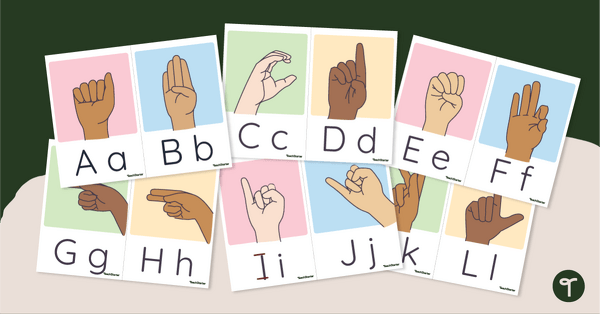
ASL Alphabet Line — Printable Cursive and Print Classroom Decor
Print a set of 26 ASL alphabet posters for the classroom with cursive and print letters to help your students with letter formation and handwriting.
- Plus Plan
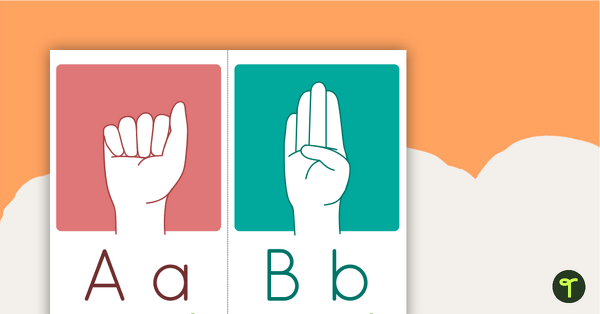
ASL Fingerspelling Alphabet - Sign Language Flashcards
A set of 26 sign language flashcards to show how to represent the letters of the alphabet when fingerspelling in ASL (American Sign Language).
- Free Plan
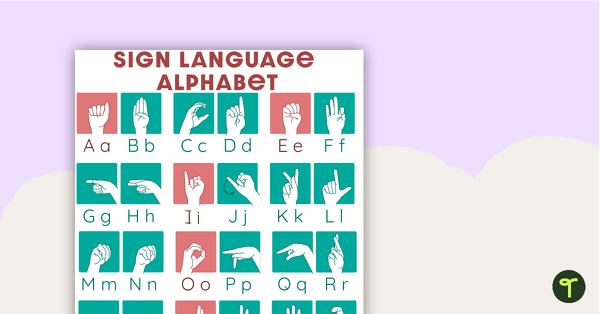
Sign Language Alphabet Poster
Display this poster in your classroom as a reminder of how to represent the letters of the alphabet when spelling words in ASL (American Sign Language).
- Free Plan
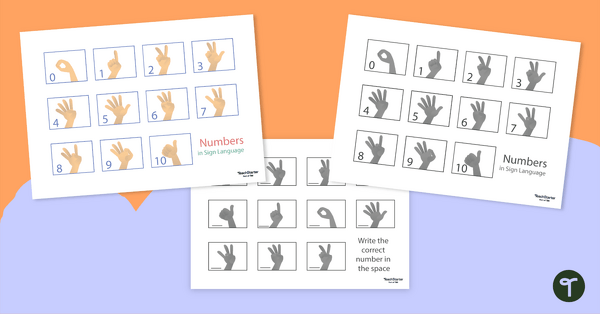
Numbers in American Sign Language Poster — Numbers 0–10
Post the numbers in American Sign Language on your classroom wall so students have an easy reference!